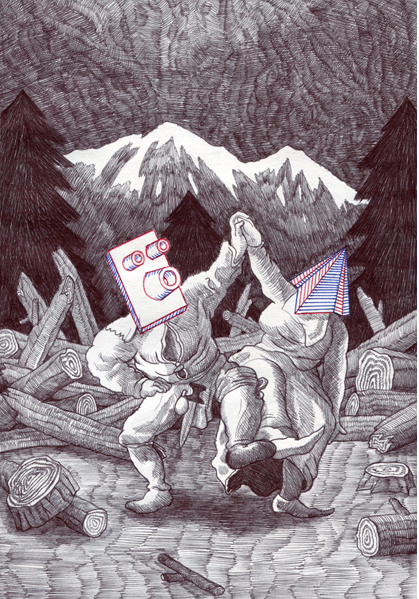at The WALL
curated by Vincent Surmont
17.10 - 31.10.2014
Vernissage: Friday
17th of October 7-10 p.m
François
Van Damme, 1979 born in Belgium, studied illustration in St Lucas Ghent/Be and
a specialisation in Ecole supérieure des Arts Décoratifs in Strasbourg. He
lives and works in Ghent Belgium.
With
each new drawing Francois Van Damme envisions new sublime geometrical abstractions.
He investigates the possibilities of complicated forms/shapes derived from
age-old ratios. It's an attempt that can be both seen as mathematical and
abstract. The artist seems more devoted to geometry and to shapes than to any
political, cultural or aesthetic cause. His work could be seen in relation with
many other geometry-inspired 20th century modernists like Piet Mondriaan, Josef
Albers, Kandinsky and Paul Klee, in the way they experiment freely on the
canvas.
His
drawings are non representational. They don't stand for something else. However
the process of their formation is entirely the result of a series of spatial
descriptions. This process can be equated to a nonlinear sequence of
computations with points, spots, planes and lines. Paul Klee declared that '
art does not reproduce the visible but makes visible'. For him the very nature
of graphic art lures us to abstraction. The combination of graphic elements
produces forms that express the schematic quality of the imaginary with great
precision.
The
more emphasis the artist puts on the basic formal elements, the less well
suited it is to representation.
In Van
Dammes’ drawings formation rather than the form becomes the primary aim of art.
He passionately embraces the art making method of decomposition instead of what
has been taught in art schools for centuries, which is ' to make an interesting
composition'. The artist uses destabilizing forms and techniques to challenge
these compositional norms and as a means for a different kind of encounter,
dialogue or resistance to conventional aesthetic orderings.
Always
starting from the white sheet of paper, the artist employs the basic
elements/tools which are the point, the spot, the pattern or the stripe.
In
order for these patterns to become geometry, repetition is needed. No drawings
here looks remotely the same, but is always built up by the same working
method. In the end the form is achieved by a continual action. The artist
rejects any notion of predetermined structure and sees the process of formation
rather than the form as the primary aim of art. Dynamic figuration based on a
world of diversity, where things move freely for the sake of going, without aim
or will, and without obedience.























